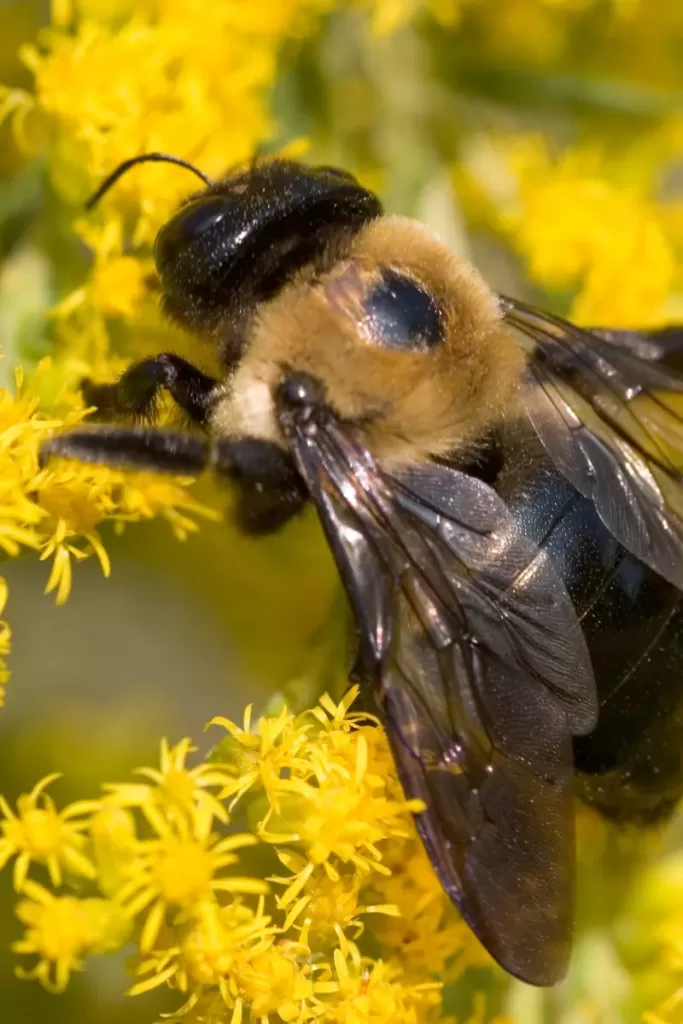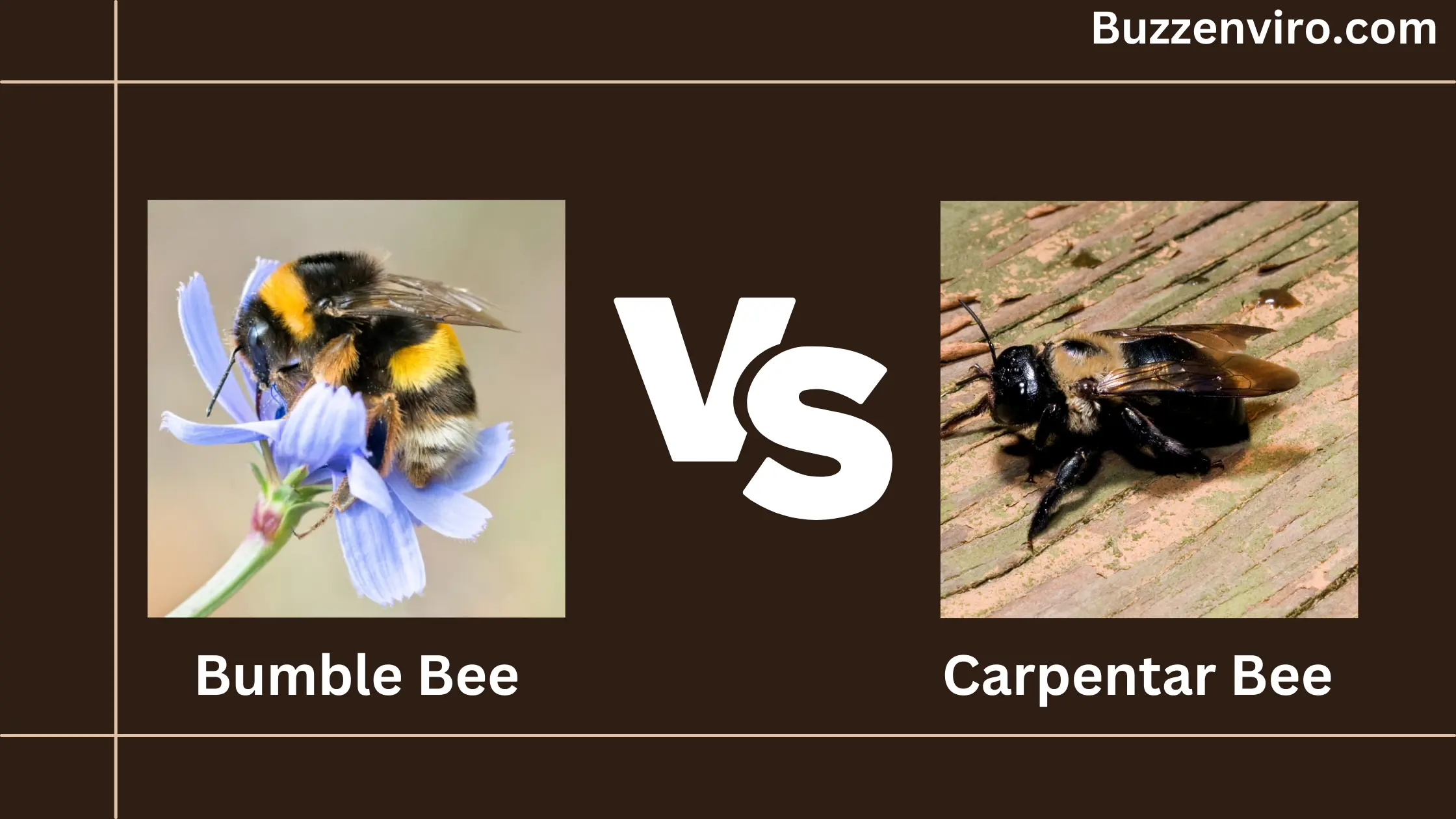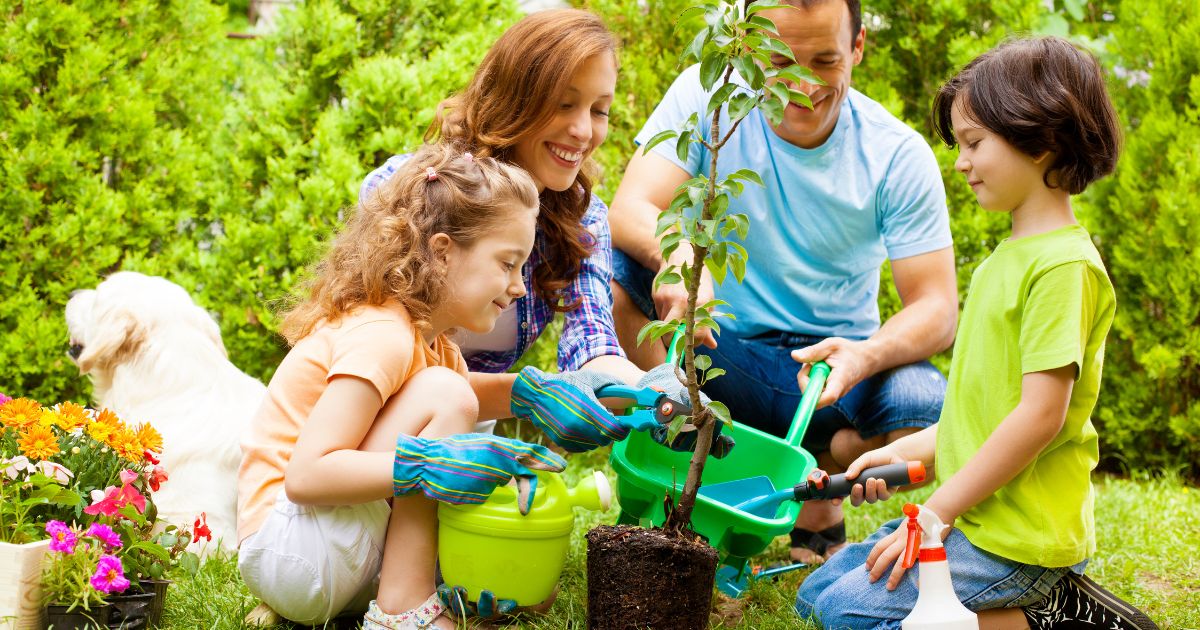When spring rolls around, bees become a familiar sight, buzzing through gardens and around flowering plants. Among the many types of bees, carpenter bees and bumble bees are two species that often get mistaken for one another due to their similar appearance. While they share certain traits, such as their role in pollination, they have distinct behaviors, physical characteristics, and impacts on your home and garden. In this blog post, we’ll explore the key differences between Bumble Bee Vs Carpenter Bee to help you identify them and understand their roles in nature.
Difference Between Bumble Bee Vs Carpenter Bee
1. Appearance: How to Tell Them Apart
Both carpenter bees and bumble bees are relatively large, but there are some clear differences in their appearance:
Carpenter Bees:
- Size & Shape: Carpenter bees are often larger than bumble bees, measuring around 1 inch in length. They have a distinctive, smooth, and shiny black abdomen, which contrasts with the furry thorax (chest).
- Coloration: While some carpenter bees have a shiny black abdomen, others may have a bit of a greenish or purple tint, depending on the species.
- Body Type: Carpenter bees have a more robust, sleek, and shiny body, with less fur on their abdomen compared to bumble bees.
Bumble Bees:
- Size & Shape: Bumble bees are usually slightly smaller than carpenter bees, ranging between 0.5 to 1 inch in length. They are more rounded and fuzzy, especially on their abdomen.
- Coloration: Bumble bees are often characterized by their bright yellow and black stripes, making them easier to spot in a garden or meadow. Some species may also have orange or white markings.
- Body Type: Bumble bees have a much fluffier and more compact body compared to carpenter bees, thanks to the dense fur on their abdomen.
2. Behavior and Habitat: Where Do They Live?
Both carpenter bees and bumble bees are important pollinators, but their behavior and nesting habits are quite different.
Carpenter Bees:

- Nesting: As their name suggests, carpenter bees are notorious for boring holes into wood to create their nests. They prefer untreated or decaying wood and are often found around homes, sheds, and decks. They can cause damage to wood structures over time.
- Behavior: Carpenter bees are generally solitary, with each female building her own nest. They do not live in colonies like bumble bees. Male carpenter bees are often seen hovering around their territory but do not sting. Females can sting, but they are not aggressive unless provoked.
Bumble Bees:

- Nesting: Unlike carpenter bees, bumble bees live in colonies. They typically nest in the ground, in old rodent burrows, or under piles of leaves or grass. Some species may also nest in old birdhouses or similar protected spaces.
- Behavior: Bumble bees are social insects that work together in a colony, with a queen, workers, and male drones. They are more docile compared to carpenter bees and rarely sting unless threatened. Bumble bees are also excellent pollinators due to their fuzzy bodies, which collect pollen efficiently.
3. Impact on Your Home and Garden
Carpenter Bees:
- Damage to Wood: While carpenter bees do pollinate flowers, their tendency to bore holes into wooden structures can lead to significant damage over time. If left unchecked, they may weaken wooden beams, decks, and fences.
- Pollination: Carpenter bees are important pollinators of various plants, including tomatoes, berries, and other fruit-bearing crops. However, their solitary nature means they don’t provide the same level of pollination as bumble bees.
Bumble Bees:
- Pollination: Bumble bees are essential for pollinating many garden plants, including fruits and vegetables like squash, cucumbers, and tomatoes. Their ability to pollinate large areas and their energetic foraging habits make them invaluable to ecosystems and agriculture.
- Minimal Damage: Bumble bees do not pose any significant damage to structures. Instead, they thrive in natural environments, such as wildflower meadows, where they nest in the ground.
4. Do They Sting?
Both carpenter bees and bumble bees can sting, but the likelihood of getting sting differs:
- Carpenter Bees: Male carpenter bees cannot sting, while females can, but they are not usually aggressive. They will sting only if they feel threatened or provoked, such as if you try to swat them away.
- Bumble Bees: Bumble bees are much more docile and are less likely to sting unless their colony is disturbed. A sting from a bumble bee can be painful, but the bees typically don’t sting unless they feel their hive is in danger.
Which Bee is Better for Your Garden?
If you’re aiming to boost pollination in your garden, bumble bees are the superior option. They are more social and effective at pollinating a wide variety of plants due to their fuzziness and energetic foraging behavior. In contrast, carpenter bees, while effective at pollinating certain plants, may damage wooden structures in the process.
How to Manage Carpenter Bees and Bumble Bees in Your Yard?
Carpenter Bees:
- To prevent carpenter bees from nesting in your wood structures, consider using wood that is treated or painted. They prefer untreated wood for burrowing.
- If you have a carpenter bee infestation, consider filling the holes with caulk or wood putty after the bees have vacated. You can also hang up decoys (like fake hornets’ nests) to deter them from returning.
Bumble Bees:
- Bumble bees are usually beneficial to your garden and can be encouraged to stay by planting native wildflowers and providing a safe space for them to nest.
- If a bumble bee nest is in an inconvenient location, consider contacting a local beekeeper to safely relocate the hive.
Final Thoughts: Carpenter Bee vs. Bumble Bee
While carpenter bees and bumble bees may seem similar at first glance, their differences are clear when you take a closer look at their behavior, appearance, and role in the environment. Carpenter bees are solitary and often cause damage to wood structures, while bumble bees are social and highly effective at pollination.
Understanding these distinctions can help you manage both species in your garden, encourage beneficial pollinators, and avoid unwanted damage to your home. Whether you’re a gardener looking to attract the right type of bee or a homeowner hoping to protect your property, knowing the differences between carpenter bees and bumble bees is key!
Have you encountered carpenter bees or bumble bees in your yard?
Share your experiences or questions in the comments below!






